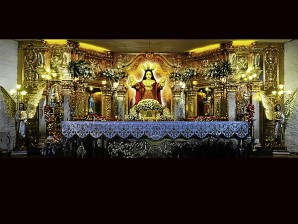Eco group warns of high toxic content of Tondo fiesta buntings
MANILA—With the feast of the Sto. Niño or Child Jesus just two days away, an environment group warned the public on Friday that the colorful “banderitas” or buntings adorning the streets of Tondo contain high levels of lead, a highly toxic chemical.
Waste and pollution watchdog EcoWaste Coalition said it discovered traces of the harmful chemical in samples of plastic bunting hanging on the streets of Albuquerque, Asuncion, Juan Luna, Lakandula, Moriones, Padre Herrera, Padre Rada and Raja Matanda.
Six of the 10 polyvinyl chloride (PVC) plastic bunting samples contained very high levels of lead. Three of the samples also registered high concentrations of arsenic and chromium, the group’s study showed.
EcoWaste Coalition Zero Waste Campaigner Tin Vergara said that it was high time for the church and the government to take a critical look at the unregulated practice of hanging fiesta buntings as this does not only add to the volume but also to the toxicity of garbage generated by communal festivities.
“Why adorn the sky with toxic ‘banderitas’ that will ultimately be disposed of in dump sites where these are burned or buried, dispersing their lead and other chemical components and causing environmental harm?” Vergara asked.
Article continues after this advertisementShe added that when the bunting is burned, it gives off toxic byproducts called dioxins that pose a cancer hazard and a long list of severe reproductive and developmental problems.
Article continues after this advertisementEcoWaste urged community leaders to take the example of the Santo Niño de Tondo Parish, which used reusable cloth drapes instead of disposable bunting to decorate the church for the feast.
“By avoiding the notorious wastefulness of our community festivities, the volume of trash will surely shrink and cut the city expense for costly garbage disposal,” Vergara said.
The Sto. Niño image is claimed to be the oldest religious image in the country brought by Ferdinand Magellan in 1521. Its feast day is celebrated every third Sunday of January.
